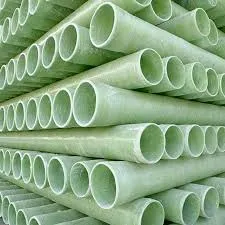
-
 Afrikaans
Afrikaans -
 Albanian
Albanian -
 Amharic
Amharic -
 Arabic
Arabic -
 Armenian
Armenian -
 Azerbaijani
Azerbaijani -
 Basque
Basque -
 Belarusian
Belarusian -
 Bengali
Bengali -
 Bosnian
Bosnian -
 Bulgarian
Bulgarian -
 Catalan
Catalan -
 Cebuano
Cebuano -
 China
China -
 China (Taiwan)
China (Taiwan) -
 Corsican
Corsican -
 Croatian
Croatian -
 Czech
Czech -
 Danish
Danish -
 Dutch
Dutch -
 English
English -
 Esperanto
Esperanto -
 Estonian
Estonian -
 Finnish
Finnish -
 French
French -
 Frisian
Frisian -
 Galician
Galician -
 Georgian
Georgian -
 German
German -
 Greek
Greek -
 Gujarati
Gujarati -
 Haitian Creole
Haitian Creole -
 hausa
hausa -
 hawaiian
hawaiian -
 Hebrew
Hebrew -
 Hindi
Hindi -
 Miao
Miao -
 Hungarian
Hungarian -
 Icelandic
Icelandic -
 igbo
igbo -
 Indonesian
Indonesian -
 irish
irish -
 Italian
Italian -
 Japanese
Japanese -
 Javanese
Javanese -
 Kannada
Kannada -
 kazakh
kazakh -
 Khmer
Khmer -
 Rwandese
Rwandese -
 Korean
Korean -
 Kurdish
Kurdish -
 Kyrgyz
Kyrgyz -
 Lao
Lao -
 Latin
Latin -
 Latvian
Latvian -
 Lithuanian
Lithuanian -
 Luxembourgish
Luxembourgish -
 Macedonian
Macedonian -
 Malgashi
Malgashi -
 Malay
Malay -
 Malayalam
Malayalam -
 Maltese
Maltese -
 Maori
Maori -
 Marathi
Marathi -
 Mongolian
Mongolian -
 Myanmar
Myanmar -
 Nepali
Nepali -
 Norwegian
Norwegian -
 Norwegian
Norwegian -
 Occitan
Occitan -
 Pashto
Pashto -
 Persian
Persian -
 Polish
Polish -
 Portuguese
Portuguese -
 Punjabi
Punjabi -
 Romanian
Romanian -
 Russian
Russian -
 Samoan
Samoan -
 Scottish Gaelic
Scottish Gaelic -
 Serbian
Serbian -
 Sesotho
Sesotho -
 Shona
Shona -
 Sindhi
Sindhi -
 Sinhala
Sinhala -
 Slovak
Slovak -
 Slovenian
Slovenian -
 Somali
Somali -
 Spanish
Spanish -
 Sundanese
Sundanese -
 Swahili
Swahili -
 Swedish
Swedish -
 Tagalog
Tagalog -
 Tajik
Tajik -
 Tamil
Tamil -
 Tatar
Tatar -
 Telugu
Telugu -
 Thai
Thai -
 Turkish
Turkish -
 Turkmen
Turkmen -
 Ukrainian
Ukrainian -
 Urdu
Urdu -
 Uighur
Uighur -
 Uzbek
Uzbek -
 Vietnamese
Vietnamese -
 Welsh
Welsh -
 Bantu
Bantu -
 Yiddish
Yiddish -
 Yoruba
Yoruba -
 Zulu
Zulu
grp flange
Understanding GRP Flanges A Comprehensive Guide
Glass Reinforced Plastic (GRP) flanges have emerged as a revolutionary solution in the realm of industrial fittings and connections. They offer a myriad of advantages over traditional materials, making them a preferred choice in various sectors, particularly in applications involving corrosive substances.
What is a GRP Flange?
A GRP flange is a type of flange made from glass fiber reinforced plastic. This composite material is created by combining glass fibers with a resin matrix, typically polyester, vinyl ester, or epoxy. The result is a lightweight, strong, and corrosion-resistant component, ideal for connecting pipes, tanks, and other equipment in fluid handling systems.
Advantages of GRP Flanges
1. Corrosion Resistance One of the most significant benefits of GRP flanges is their remarkable resistance to chemical corrosion. They can withstand aggressive substances, including acids, pollutants, and saline environments, making them suitable for the chemical, petrochemical, and wastewater industries.
2. Lightweight Compared to metal flanges, GRP flanges are substantially lighter, reducing the overall weight of piping systems. This characteristic not only eases installation and handling but also minimizes structural support requirements.
3. Low Thermal Conductivity GRP flanges exhibit low thermal conductivity, making them an excellent choice for applications requiring insulation. This property helps to maintain temperature control and reduces energy costs associated with heating and cooling processes.
4. Durability GRP flanges are designed to withstand abrasive environments and mechanical stress. They do not corrode or degrade in harsh conditions, resulting in a longer operational life and reduced maintenance costs.
5. Cost-Effectiveness While the initial investment in GRP technology may be higher than traditional materials, the long-term savings from reduced maintenance, replacement, and energy costs can make GRP flanges a more economical option over time.
grp flange

Applications of GRP Flanges
GRP flanges are widely used in various industries. Some common applications include
- Water Treatment Due to their corrosion resistance and durability, GRP flanges are ideal for municipalities dealing with wastewater and water treatment processes.
- Chemical Processing The ability to resist harsh chemicals makes GRP flanges suitable for environments where reactive substances are processed.
- Marine Applications GRP’s resistance to saltwater corrosion makes it a preferred choice for marine infrastructure, including piers and offshore platforms.
- Oil and Gas In the oil and gas industry, GRP flanges are used in piping systems that transport corrosive fluids, providing reliable and long-lasting connections.
Installation and Maintenance
Installing GRP flanges requires careful attention to ensure a proper seal and alignment. Typically, rubber or silicone gaskets are used in conjunction with bolting to create a leak-proof connection. Regular inspections are advised to check for signs of wear or damage, ensuring the integrity of the system.
Conclusion
In conclusion, GRP flanges represent a significant advancement in fluid handling technology. Their unique properties, such as corrosion resistance, lightweight nature, and durability, make them an attractive alternative to traditional metal flanges. As industries continue to prioritize efficiency and sustainability, the adoption of GRP products is likely to rise, reinforcing their status as a vital component in modern engineering solutions. Whether for new installations or upgrades, GRP flanges are undoubtedly a smart choice in today’s industrial landscape.









